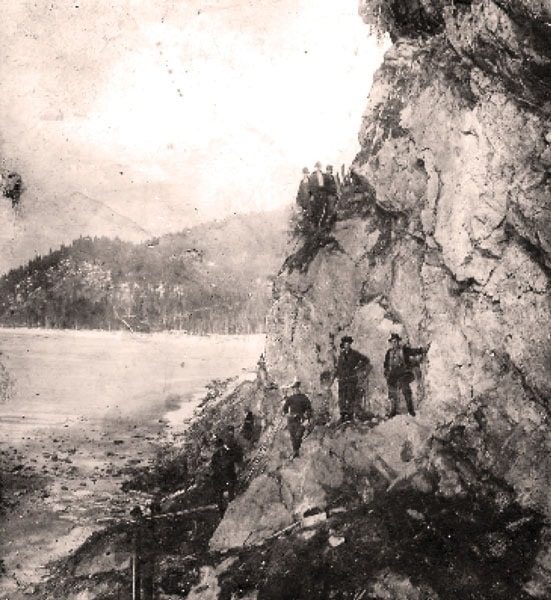Old photos or letters stored away in your home may be crucial to the preservation of an historic experience that took place in Sicamous residents’ backyard.
Officials with the Canadian First World War Internment Recognition Fund are appealing to residents of the Sicamous area, along with 23 other communities, to help out with projects that commemorate and recognize the experiences of all ethno-cultural communities affected by Canada’s first national internment operation of 1914 to 1920.
In British Columbia, there were camps located in Nanaimo, Revelstoke, Monashee, Fernie/Morrissey, Field and Vernon, as well as two camps along Mara Lake – one in Swansea Point and the second in Two Mile. In 2002, a plaque honouring the memory of Ukranians interned at these two camps was located in Two Mile. While the story of the Mara camps is known, the recognition fund exists to help further flesh it out. One means is an endowment fund offered for projects that advance public education about the internments. To date, about $400,000 has been handed out for projects, says Internment Recognition Fund co-ordinator Andrea Malysh. Among these is a documentary featuring an internee descendent relating the story of his grandfather. Another is a photographic history to be published in the near future.
“She’s gone to all 24 camps and taken photographs, and she’s putting out a pictorial book on all the 24 camps, then and now,” says Malysh. “She talked to a lot of families, internees descendants, on how it affected them.
“So whether it’s art, literature or research –you have to understand too, a lot of the primary research hasn’t been done in the local communities, so we happily give out funding for primary research. Because really, how do people write about it if the research hasn’t been done and provided in the first place?”
The foundation is also interested in acquiring artifacts related to the camps.
“People may not even know what they have – it’s just amazing what’s popped up,” says Malysh, adding there is money set aside to acquire artifacts.
“We recently purchased a signboard that was built in the Fernie/Morrisey camp, and it’s actually now on loan to the Vernon museum until we figure out where these artifacts should go,” says Malysh.
Grant funding has also been given to UBC to provide a national education curriculum, so that students can learn how Eastern European immigrants, considered enemies of the nation under the War Measures Act, were interned and how many were put in labour camps, forced to build infrastructure, including the road along Mara Lake that would eventually become part of Highway 97A.
“Many were subjected to other state-sanctioned indignities, including disenfranchisement, restrictions on their freedom of speech, movement and association, deportation and the confiscation of what little wealth they had, some of which was never returned,” states a media release. “This happened even though the British Foreign Office informed Ottawa that these eastern Europeans were ‘friendly aliens’ who should be given ‘preferential treatment.’ These men, women and children suffered, not because of anything they had done, but only because of who they were, where they had come from.”
Anyone wishing to learn more about the endowment fund, or with artifacts to contribute, may contact Malysh at 1-866-288-7931, or visit www.internmentcanada.ca.
